A wedding party with 28 million guests
On June 25, 2015 (the same date that saw the end of racial and gender discrimination in earlier decades) the American Supreme Court (SCOTUS) ruled that marriage equality was a constitutional right.
The ruling was only 5-4, so four of the judges voted against – and not all in a, let’s say, neutral way. Justice Scalia wrote “The opinion is couched in a style that is as pretentious as its content is egotistic. Of course the opinion’s showy profundities are often profoundly incoherent.” A sore loser, if there ever was one. Being a lawyer myself, I frown upon such language from what is supposed to be an esteemed and eminent judge.
Marriage equality is very much a political, legal and social situation: married couples get more than 1,300 rights conferred upon them, depending on the state they live in. The acquisition of these rights also comes at a cost to the government (think benefits such as spousal pensions etc.), which for a while as an argument against this step forward. However, the impact on the economy – and hence marketing – is tremendous.
Here come the advertisers
Soon after the verdict a true avalanche of advertising flooded the US market – in fact, the effects were seen worldwide.
From long-time supporter Absolut to Coca Cola, from Visa to Allstate Insurance, from Miller Lite to Starbucks: they had all prepared special ads or commercials to celebrate this historic milestone. Hundreds of companies changed their online avatars to show their LGBT Pride.
Landmarks across the country lit up in rainbow colours, such as the White House – a unique gesture – the Niagara Falls, San Francisco city hall, the top of the brand new World Trade Center, Cinderella Castle at Disney World, bridges and other buildings.

Social media
Social media broke out in a frenzy, led by celebrities and policiticans, such as President Obama and Hillary Clinton. Records were broken: twitter and Instagram almost exploded. Humor was used generously (see picture of the map, by Hillary Clinton’s campaign).
Facebook’s founder Mark Zuckerburg personally launched a tool that put a rainbow filter over your profile picture. The tool was used 28 million times in just 3 days, a record. Earlier, there were green filters for Iranian protesters in 2009, yellow ribbons for Hong Kong in 2014, black dots to oppose sexual violence in India, Arabic “Ns” to support Iraqi Christians. Famously, in 2013, the LGBT rights group Human Rights Campaign got several million Facebook users to change their picture to its logo. But no filter was adopted so massively as this one.
Critics said that the intention of Facebook was not so noble – but merely a marketing plot. A Facebook spokesperson didn’t deny that the social network was tracking which users support gay marriage and adding that to the database of personal information the company has on its billion users. “This was not an experiment or test, but rather something that enables people to show their support of the LGBTQ community on Facebook. We aren’t going to use this as a way to target ads and the point of this tool is not to get information about people.” The opponents added: “This is not to say that you shouldn’t give your Facebook profile the rainbow treatment. It’s a great way to celebrate a historic event. But don’t forget that, as always, Facebook is watching.”
Let go of the rainbow?
 An interesting discussion arose in the weeks after: (when) was it OK to remove the filter and go back to your normal profile picture? Would removing it mean you no longer supported the cause? One pundit said: “Of course I support equality, but my old picture used a very flattering Instagram filter. This one makes me look simultaneously seasick, jaundiced and sunburned. I can’t change it back though in case everybody thinks I’ve suddenly become a massive homophobe. I might as well put up a selfie with Vladimir Putin.” Someone else said “My nephew’s already ditched his rainbow filter picture but he’s actually gay so nobody’s going to call him a bigot.” “Ideally there’d be a signal for when we can get rid of it without anyone thinking less of us. Maybe Ian McKellen could send a mass email titled ‘Rainbow down if you like, or something?’ Or am I stuck with this until I get a new cat or have a baby?”
An interesting discussion arose in the weeks after: (when) was it OK to remove the filter and go back to your normal profile picture? Would removing it mean you no longer supported the cause? One pundit said: “Of course I support equality, but my old picture used a very flattering Instagram filter. This one makes me look simultaneously seasick, jaundiced and sunburned. I can’t change it back though in case everybody thinks I’ve suddenly become a massive homophobe. I might as well put up a selfie with Vladimir Putin.” Someone else said “My nephew’s already ditched his rainbow filter picture but he’s actually gay so nobody’s going to call him a bigot.” “Ideally there’d be a signal for when we can get rid of it without anyone thinking less of us. Maybe Ian McKellen could send a mass email titled ‘Rainbow down if you like, or something?’ Or am I stuck with this until I get a new cat or have a baby?”
The most important aspect of the profile filter was to show a social trend: you are more likely to believe something, or accept something, if (many of) your friends do so too. In that way, the filter helped the LGBT movement in a big way.
Hashtag records
The hashtag used most for the campaign preceding and following the SCOTUS ruling was #LoveWins: Twitter updated its site to include a rainbow heart icon when anyone tweeted #LoveWins. It had over 6 million occurrences within 6 hours (at its peak there were 35,000 tweets sent per minute). For comparison: the 2015 Super Bowl generated around 1 million tweets with #SuperBowl, while #JeSuisCharlie reached 2.1 million about six hours after the attack. #LoveWins reached over 11 million tweets in the weekend that followed, mainly because many Pride events took place.
 The tweet that started the viral movement – although it was not the first to use that hashtag – was that of President Obama, which was retweeted over 450,000 times.
The tweet that started the viral movement – although it was not the first to use that hashtag – was that of President Obama, which was retweeted over 450,000 times.
Economic impact
 The economic impact of this landmark decision by SCOTUS can hardly be overestimated. CNN suggested “Same-sex marriage & your money – Corporate America celebrates gay marriage decision”. Other sources explained that this decision will also influence mainstream advertising, “because marketers seeking to communicate more honestly and authentically with consumers now have an opportunity to not only tell better stories, but to provide a more accurate snapshot of consumers overall.”
The economic impact of this landmark decision by SCOTUS can hardly be overestimated. CNN suggested “Same-sex marriage & your money – Corporate America celebrates gay marriage decision”. Other sources explained that this decision will also influence mainstream advertising, “because marketers seeking to communicate more honestly and authentically with consumers now have an opportunity to not only tell better stories, but to provide a more accurate snapshot of consumers overall.”
It’s been a long road from the first depictions of gay couples in mainstream media to broader messages of support and inclusion for the LGBT community by major American brands, but experts say marriage equality will likely open up even more doors and accelerate the pace of change within the advertising world. There’s definite interest among consumers in LGBT content.
What the experts say
 Bob Witeck opined that marriage equality gives “refreshing permission for brands to really shake up their thinking about all the storytelling they do… as well as to show the market they ‘get it.’” He adds: “depictions of gays and lesbians in advertising used to be sourced from stock photos of attractive people of the same sex who were put in a given setting with the assumption that they were gay. Now, however, more brands are including ‘real people in real situations.’ And that’s reflective of a shift within marketing overall. Brands that hope to reach younger audiences and Millennials will look for fresh messengers and images to do it. My point of view is very simple: Gay marketing doesn’t exist as it used to. It’s really Millennial marketing”.
Bob Witeck opined that marriage equality gives “refreshing permission for brands to really shake up their thinking about all the storytelling they do… as well as to show the market they ‘get it.’” He adds: “depictions of gays and lesbians in advertising used to be sourced from stock photos of attractive people of the same sex who were put in a given setting with the assumption that they were gay. Now, however, more brands are including ‘real people in real situations.’ And that’s reflective of a shift within marketing overall. Brands that hope to reach younger audiences and Millennials will look for fresh messengers and images to do it. My point of view is very simple: Gay marketing doesn’t exist as it used to. It’s really Millennial marketing”.
David Paisley of Community Marketing concurs: “the inclusion of LGBT consumers in mainstream advertising provides a more accurate portrayal of American consumers overall. It also helps brands tell more authentic stories. But that’s not to say LGBT marketing will cease to exist as a separate entity entirely. Advertising is always about targeting.”
Weddings
It is hard to value this in money, but apart from wedding ceremonies, there are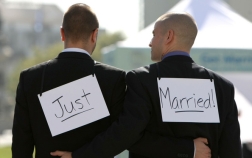 many other factors that impact the economy, and hence the marketing activities of companies, as witnessed by the above outbursts of joy. The UCLA’s Williams Institute did a study of the immediate effect, and came up with a boost for the economy of USD 2.6 bln in the first three years, which would result in an additional USD 185 mln in tax revenues and more than 13,000 additional jobs – all this from weddings alone. Increased travel (spending) and other effects were not yet calculated.
many other factors that impact the economy, and hence the marketing activities of companies, as witnessed by the above outbursts of joy. The UCLA’s Williams Institute did a study of the immediate effect, and came up with a boost for the economy of USD 2.6 bln in the first three years, which would result in an additional USD 185 mln in tax revenues and more than 13,000 additional jobs – all this from weddings alone. Increased travel (spending) and other effects were not yet calculated.
Real estate
 A report by Better Homes and Gardens Real Estate observes how the ruling impacts the housing market. Same sex couples can now buy a home and be listed on the title as a couple. There is no more awkwardness – no more need to call yourselves “joint tenants” or “roommates” to jointly own (or rent) a place. This facilitates and will certainly increase the number of sales, rather than rentals. A survey conducted by the National Association of Gay and Lesbian Real Estate Professionals shows that 80% of LGBT respondents felt that marriage equality ruling will give them more financial confidence. Other surveys show that 54% of LGBT respondents owned homes, when compared to the national average that’s about 10% less than the national homeownership rate – which in its turn is at it’s lowest point since 1993!
A report by Better Homes and Gardens Real Estate observes how the ruling impacts the housing market. Same sex couples can now buy a home and be listed on the title as a couple. There is no more awkwardness – no more need to call yourselves “joint tenants” or “roommates” to jointly own (or rent) a place. This facilitates and will certainly increase the number of sales, rather than rentals. A survey conducted by the National Association of Gay and Lesbian Real Estate Professionals shows that 80% of LGBT respondents felt that marriage equality ruling will give them more financial confidence. Other surveys show that 54% of LGBT respondents owned homes, when compared to the national average that’s about 10% less than the national homeownership rate – which in its turn is at it’s lowest point since 1993!
It also affects the choice of location of residence. Now that gay marriage is legal countrywide, there is no more need to move to a limited number of places in order to be wed. The ruling opened up a wide range of options for the LGBT community to relocate should they wish.
Having said that, while the ruling allows for the marriage of the same-sex, it doesn’t mean the LGBT community is free from housing discrimination. The case of Kim Davis illustrates that not everyone agrees with the newly acquired equality, and it will take some time before this stance decreases.
Estate planning
 Finally, the ruling also greatly impacts estate planning. LGBT Americans will now be eligible for dramatically different legal rights upon the death or disability of their life partner. The legal implications are far-ranging, from symbolic, to monetary, to life-changing.
Finally, the ruling also greatly impacts estate planning. LGBT Americans will now be eligible for dramatically different legal rights upon the death or disability of their life partner. The legal implications are far-ranging, from symbolic, to monetary, to life-changing.
Before, lesbian or gay couples had no guarantee of access to their loved one in the hospital, especially when traveling out of state. They could never have been certain that, when naming a partner as a future decision maker under a living will, that their choice would have been recognized — especially if challenged in court by “actual” family members. Wealthy couples would have potentially faced double inheritance taxes, along with being denied other tax savings that are available for married couples.
The next-of-kin has the right to plan a funeral to honor and celebrate a lost life. Before, that would not have included same-sex spouses in many states.
Income taxes, gifting, health insurance, adoption
Married couples can now file joint state income tax returns, which typically leads to a lower tax liability than filing two individual returns. Also, a big advantage of married status is that you can make unlimited gifts to your spouse without worrying about federal or state gift taxes. Fully-insured medical plans will likely now be required to cover same-sex spouses. Self-insured medical plans can arguably continue to exclude same-sex spouses from coverage, but would be at risk of challenges under sex discrimination laws.
spouse without worrying about federal or state gift taxes. Fully-insured medical plans will likely now be required to cover same-sex spouses. Self-insured medical plans can arguably continue to exclude same-sex spouses from coverage, but would be at risk of challenges under sex discrimination laws.
Finally, adoption becomes more realistic: now both parents can legally adopt their children, or one can adopt the child of their partner.
Conclusion
Married homosexual couples can sleep better at night. They can prepare wills, trusts, end-of-life documents, and other critical estate planning instruments just like any other married couple. Estate planning lawyers no longer have to explain to them, “Sorry, I have to treat you differently than my other clients.” They no longer have to be afraid about what could happen to a spouse or children if one of them were to get in an accident and a judge refused to recognize the marriage. No one likes thinking about the inevitability of death, the consequences of aging, or the scary possibility of a disability. But now, gay and lesbian couples can face those issues head on, like everyone else, comforted by the knowledge that the laws of the state they live in won’t make a sad situation even worse by discriminating against them during the worst time of their lives.[1]

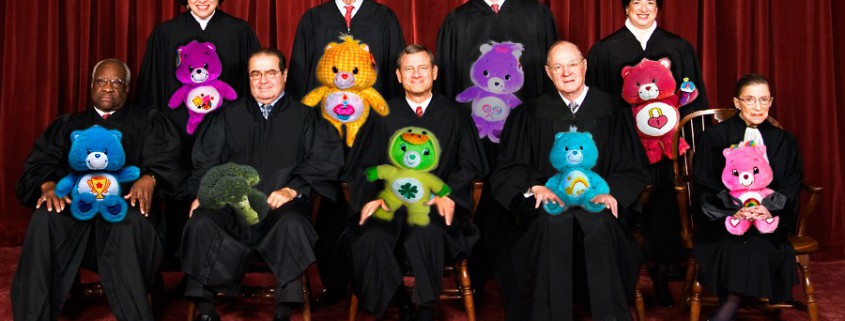



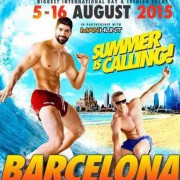
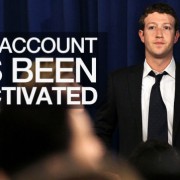


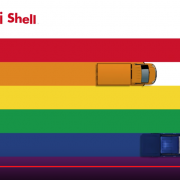
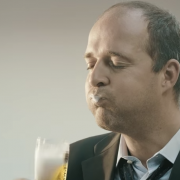


Trackbacks & Pingbacks
[…] A wedding party with 28 million guests […]
Leave a Reply
Want to join the discussion?Feel free to contribute!